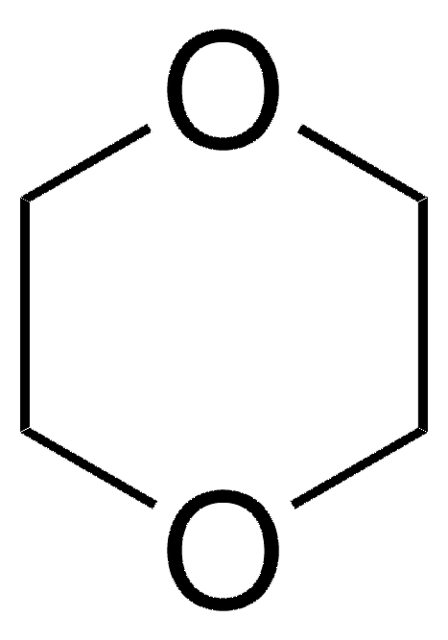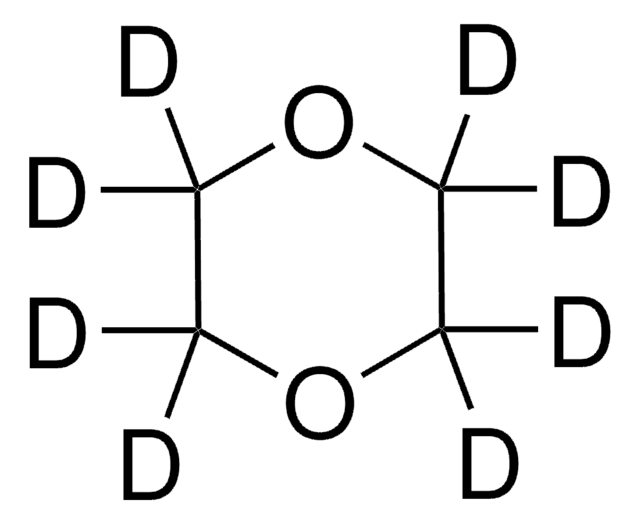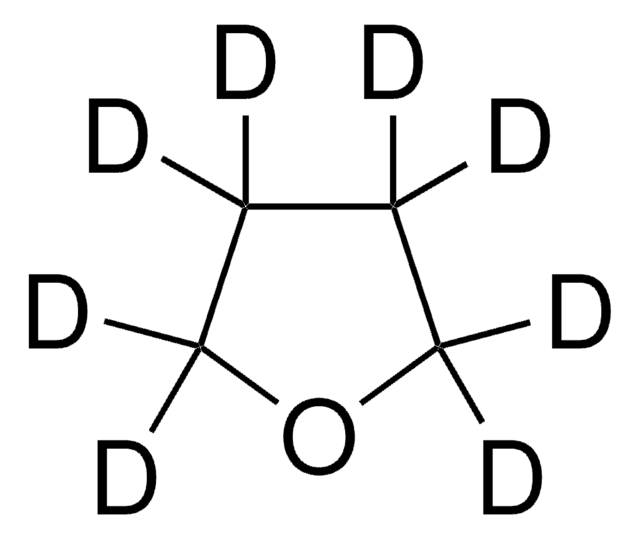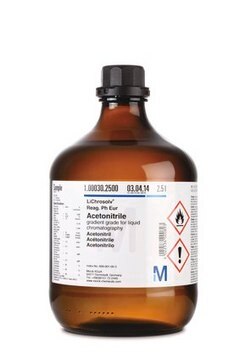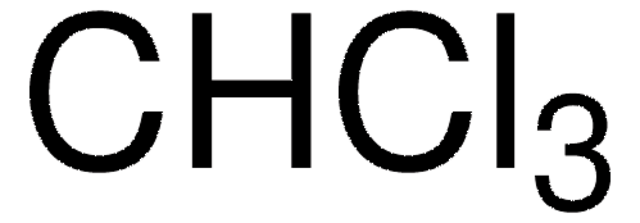612073
1,4-Dioxan -Lösung
NMR reference standard, 40% in benzene-d6 (99.6 atom % D), chromium(III) acetylacetonate 5 mg/mL, NMR tube size 3 mm × 8 in.
About This Item
Empfohlene Produkte
Qualität
NMR reference standard
Qualitätsniveau
Zusammensetzung
chromium(III) acetylacetonate, 5 mg/mL
Konzentration
40% in benzene-d6 (99.6 atom % D)
Methode(n)
NMR: suitable
NMR-Röhrchengröße
3 mm × 8 in.
SMILES String
C1COCCO1
InChI
1S/C4H8O2/c1-2-6-4-3-5-1/h1-4H2
InChIKey
RYHBNJHYFVUHQT-UHFFFAOYSA-N
Suchen Sie nach ähnlichen Produkten? Aufrufen Leitfaden zum Produktvergleich
Verwandte Kategorien
Leistungsmerkmale und Vorteile
Menge
Signalwort
Danger
Gefahreneinstufungen
Aquatic Chronic 3 - Asp. Tox. 1 - Carc. 1A - Eye Irrit. 2 - Flam. Liq. 2 - Muta. 1B - Skin Irrit. 2 - STOT RE 1 - STOT SE 3
Zielorgane
Blood, Respiratory system
Zusätzliche Gefahrenhinweise
WGK
WGK 3
Flammpunkt (°F)
32.0 °F
Flammpunkt (°C)
0 °C
Analysenzertifikate (COA)
Suchen Sie nach Analysenzertifikate (COA), indem Sie die Lot-/Chargennummer des Produkts eingeben. Lot- und Chargennummern sind auf dem Produktetikett hinter den Wörtern ‘Lot’ oder ‘Batch’ (Lot oder Charge) zu finden.
Besitzen Sie dieses Produkt bereits?
In der Dokumentenbibliothek finden Sie die Dokumentation zu den Produkten, die Sie kürzlich erworben haben.
Kunden haben sich ebenfalls angesehen
Unser Team von Wissenschaftlern verfügt über Erfahrung in allen Forschungsbereichen einschließlich Life Science, Materialwissenschaften, chemischer Synthese, Chromatographie, Analytik und vielen mehr..
Setzen Sie sich mit dem technischen Dienst in Verbindung.